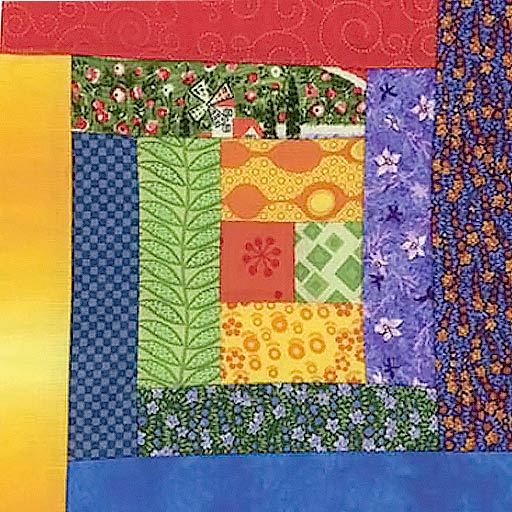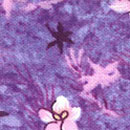“I am tremendously content to let one activity after another go, and to wait quietly and happily the opening of the door at the end of the passageway that will let me into my real abiding place.”
Hannah Whitall Smith, 1903, PYM Faith and Practice, 2002
Hospice is an extremely useful service to a person who might have only a few months to live and his or her family. Such was my own case: my 86-year-old mother had been living with me for eight years.
One evening, I had just been home to check on my mother before I went out socially with the local hospice director. The hospice director asked me about Mom’s condition. I let her know she did not get around much. Mom was basically wheelchair bound and incontinent, but she did not seem to have any life-threatening illness. The Director replied, “I’ll bet she would be eligible for hospice.”
I was surprised. Here I was, a gerontologist working on end-of-life research and I did not recognize that she might qualify for hospice. The next morning I called her doctor, “Do you think Mom might die within six months?” He laughed, “I don’t know when your mother will die, but I will agree to her having hospice.” The intake nurse from hospice program came over and did an assessment. Sure enough, my mother qualified for hospice care.
But, oh, what would I say to Mom? I decided to be very upbeat, as if we had just gotten a bonus check on life, and went into her room saying, “Guess what, Mom? We can get hospice! Wow, this is great.”
And indeed it was great. It meant that a nurse case manager came every week to check on Mom’s health and well-being. She would occasionally suggest different medications to the doctor. If the doctor agreed, soon would come a delivery of free medicine. The same happened with equipment needs that made it easier to care for her. A delightful chaplain came regularly to chat. I’m sure he heard how Mom felt ready to die and go be with Daddy in heaven. A young hospice volunteer came and I am quite certain he was asked more of his own life story than he got out of Mom. An aide came twice a week to bathe Mom or do what she needed. This help was all a great boon to the housekeeper and myself as we tried to keep up with her care.
About four months into the program, Mom was a little weaker, and it was harder to get her in and out of bed. A device called a Hoyer lift was brought in to help lift her from the bed, but the space could not accommodate it. The long-term housekeeper was moving on, and I was getting quite nervous as to how I would pull my daughter’s wedding together in six weeks, keep my job, and maintain good care for Mom. The chaplain and case manager counseled me to check Mom into a nursing home. They would be able to follow her care there. Reluctantly, I did. Mom ended up in a very nice personal care home where her hospice care continued.
The family all came for the wedding. Mom got to go in a special van, even stayed to watch the festivities. The family left after farewell visits with Mom. The hospice aide had started a routine of bringing her guitar on her regular visits in order to sing hymns. The primary hymn they sang the following day was, “I’ll Fly Away.” Mom did indeed fly away the following day. I was working out of town, but rushed back when I got word that her death was eminent. When I arrive her body had been washed and she was beautifully peaceful. The hospice bereavement chaplain was waiting there for me, assisted in my last goodbyes to Mom, and guided my next steps.
Mom had died five months after enrolling in hospice and five days after her last granddaughter’s wedding. Hospice filled mom’s end-of-life care with great quality, all at no cost! I also had the benefit of bereavement care for the next year.
Basic hospice features are:
- Medicare, Medicaid and most health insurances pay for hospice. In addition, hospices never turn people away because they cannot pay.
- The patient has no further aggressive treatment to cure an illness, all medical treatment is palliative, or comfort care, with excellent pain and symptom management.
- Hospice is run by a team: nurse/case manager, social worker, aide, chaplain, bereavement coordinator, doctor, and volunteer.
- The care is for physical, psychological, and spiritual needs.
- Sometimes, a patient can easily get better with all the good care and “graduate” out of hospice.
“I have got to leave. Bid me farewell, my brothers!
I bow to you all and take my departure.
Here I give back the keys of my door – and I give up
All claims to my house. I only ask for last kind words
from you…”
Rabindranath Tagore
Download this article in pamphlet form
LINKS TO MORE INFORMATION: Click on the blue text below to be directed to outside websites that offer additional information on this topic. Articles from this site will open in the same browser window/tab. Articles from other websites will open in a new window; when you are done, simply click out of that window and you will be back on this site.
More articles on this website:
End of Life Decision Making and Quaker Testimonies
Care of the Caregiver
Grief
Slow Medicine
Other Articles/Links:
Caring Connections information about hospice care
Find a Hospice or Palliative Care Provider
Sources/Further Reading:
Kirsten Backstrom, In Beauty, A Quaker Approach to End of Life Care, Pendle Hill Pamphlet 355, 2010, Pendle Hill, Wallingford, PA.
Denys Cope, RN, BSN, Dying: A Natural Passage, 2008, Three Whales Publishing, Santa Fe, NM.
Hank Dunn, Hard Choices, Fifth Edition 2009, A&A Publishers, Inc., Lansdown, VA or order online
Lucy Schreechfield McIver, Song of Death, Our Spiritual Birth, A Quaker Way of Dying, Pendle Hill Pamphlet, Pendle Hill, Wallingford, PA.
Blessed are they who mourn, for they shall be comforted. The Beatitudes

